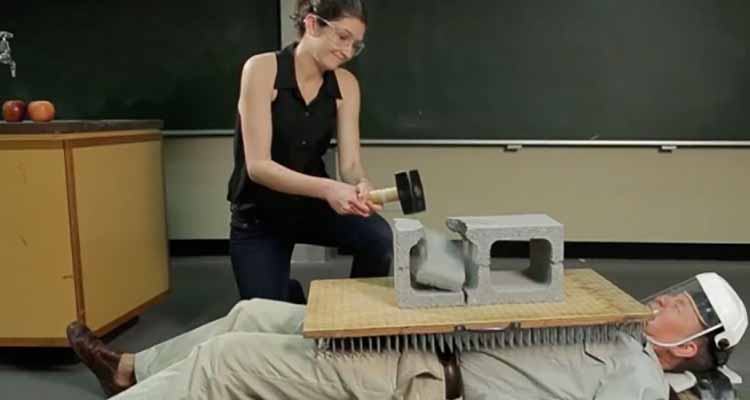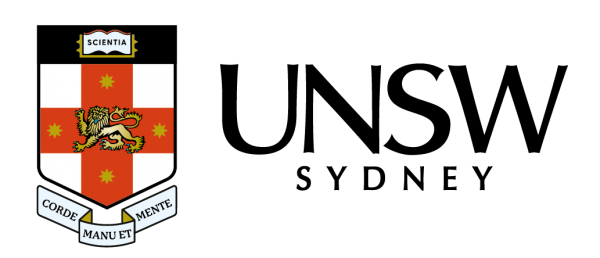
UNSW Science’s Professor Joe Wolfe is popular among students for his dramatic lecture demonstrations and has won international awards for his research and teaching style.
Whether he’s sandwiched between beds of nails while bricks are smashed on his chest, explaining Einstein's theory of relativity to non-scientists, or composing music while walking along the cliffs at Coogee, UNSW Physics Professor Joe Wolfe is constantly learning and exploring new ways of teaching.
Prof. Wolfe has worked in physics for several decades, including stints at Cornell University in upstate New York and the École Normale Supérieure in Paris.
UNSW Sydney is where he has followed his passion for the physics of the voice and musical instruments after the University’s biophysics department (and Kensington’s proximity to the beach) reeled him in.
As a child, Prof. Wolfe’s love of physics came from asking ‘why’.
“My ‘why’ questions usually led to physics; if I asked, ‘why are plants green?’ and was told, ‘because of chlorophyll’, I would ask, ‘why is chlorophyll green?’ Someone would tell me, ‘because chlorophyll absorbs red and blue’,” he said.
“At a very early age I went from wanting to be a fireman to a scientist because of Sputnik – the grown-ups were so excited about this artificial moon going ‘beep beep beep beep’ on the radio.”
Musical memories
The world's first artificial satellite was not the only thing that captivated Prof. Wolfe as a child.
“From very early, I enjoyed musical evenings at my relatives’ farmhouses in the country. Two of my aunts were pianists and we sang around the piano,” he said.
“People of my parents’ and aunts’ generation liked Bing Crosby and Frank Sinatra, so that’s how I was exposed to jazz standards.”
At 13, Prof. Wolfe began playing jazz on the saxophone, which he still regards as his “native instrument”, although these days he plays bassoon in orchestral and chamber music.
He also composes music, such as a trumpet concerto and quirky quartet (for flute, saxophone, bassoon and cello). The quartet is regularly played around the world, so he says it will outlive him.
A new teaching style
Prof. Wolfe completed a PhD and a few postdocs in order to become a research scientist.
“But when I became a lecturer at UNSW, I resolved that I’d work to become a good teacher too,” he said.
At UNSW, Prof. Wolfe was thrown into the deep end with the big first year physics class in his first weeks and had to learn how to teach and improve on the job.
“It was the first week of second session in front of a large cohort of engineers and in those days they were pretty rowdy, so it took some effort to attract their attention,” he said.
“I tried a few theatrical tricks, but the main thing was to have interesting demonstrations, to get students interested in the outcomes and, as often as possible, to analyse them quantitatively.
“First year physics is in the world around you and it's usually possible to demonstrate something. So, it's worth showing students that what they're doing is more than an abstract calculation, it’s an analysis of the real world.”
Engaging presentations with circus-like drama have become a hallmark of Prof. Wolfe’s teaching style ever since.
He has taught 20,000 to 30,000 first year physics students across the years.
“Fairly often, someone on campus, the street or the train will recognise me and say: ‘You probably don’t remember me but you're Joe Wolfe, thank you for teaching me Physics 1 in such-and-such a year. I still remember you climbing up the wall, getting zapped by electricity, bricks not falling on your head and all the other bits and pieces’,” he said.
“Many past students now have interesting and fabulous careers, so it's hugely satisfying to know they are making important contributions to society.”
Explaining special relativity in 10 minutes
Prof.Wolfe has won international awards for his research and public teaching on the web.
Among his best educational sites are:
- Physclips, on introductory physics
- Music Acoustics, which aims to explain his lab group’s research and the basics of music acoustics to curious people without scientific backgrounds
- Einstein Light, which celebrates the centenary of Einstein’s theory of special relativity in 2005.
“Someone posed the challenge: could we explain the basics of relativity in 10 minutes? I said, ‘Well, superficially in 10 minutes, more deeply in 10 hours’,” Prof.Wolfe said.
“Our animated version takes less than 10 minutes, but supported by HTML pages with more detail, the information is available that would allow a general audience to understand aspects of special relativity in about 10 hours.”
The human voice and new knowledge
The workings of the human voice continue to intrigue Prof. Wolfe, who says we still don’t completely understand this fabulous phenomenon that makes us human.
“I’d like to understand better the basic mechanisms of the human voice: the details of how the steady power of breath is converted into mechanical oscillations in the vocal folds and how this changes under different conditions,” he said.
“On a practical level, better understanding the human voice will help inform studies of the voice for medical or pedagogical reasons: people who want to teach singing, speaking and perhaps speech therapy as well.
“Research into the voice is in part curiosity driven. Given that it's so fundamental to human culture and civilization, we really should have a better understanding of it.”
- Log in to post comments
